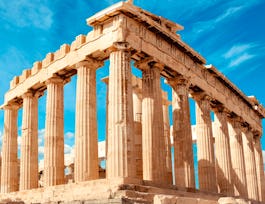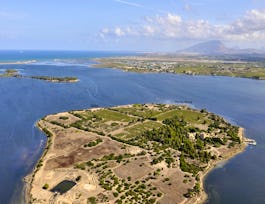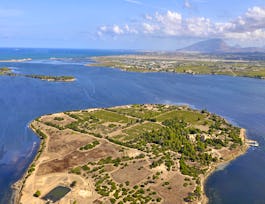The Arch of Titus: Rome and the Menorah explores one of the most significant Roman monuments to survive from antiquity, from the perspectives of Roman, Jewish and later Christian history and art. The Arch of Titus commemorates the destruction of Jerusalem by the emperor Titus in 70 CE, an event of pivotal importance for the history of the Roman Empire, of Judaism, of Christianity and of modern nationalism.



Arch of Titus: Rome and the Menorah

Instructor: Steven Fine
Sponsored by Pontificia Universidad Católica del Perú
11,758 already enrolled
(121 reviews)
Details to know

Add to your LinkedIn profile
1 assignment
See how employees at top companies are mastering in-demand skills


Earn a career certificate
Add this credential to your LinkedIn profile, resume, or CV
Share it on social media and in your performance review

There are 6 modules in this course
This module introduces the Arch of Titus and the larger themes of the course. Students will begin to view the Arch from the perspectives of Roman and Jewish history, of the victors and the vanquished, and the continuing history of this artifact. They will be sensitized to the presence of imagery related to the Arch in the larger culture, and be able to identity some of that imagery.
What's included
8 videos1 reading1 peer review
This module explores the Arch of Titus as an artifact. Students will learn to look closely at this and other historical monuments in order to draw out the meanings of its iconography. They will see the Arch and especially its carved relief panels through selected refracting lenses.
What's included
8 videos1 assignment
Roman and Talmudic sources on Titus's triumphal parade in 71 CE will be the focus of this module. Students will read these ancient texts critically and assess the historical value for understanding the Arch and its later reception.
What's included
4 videos1 peer review
Students will explore Jewish and Christian perspectives of the Arch and be able to explain how these perceptions affected their experience and interpretation of this artifact. Conversations with scholars and museum "visits" demonstrate a broad range of contemporary perspectives on the Arch and the continued significance of its iconography.
What's included
13 videos1 peer review
We will explore the ways that moderns have viewed and used the Arch, through the close reading of primary visual and literary sources. "Fieldtrips" and conversations contextualize the search for Arch imagery in our world, and demonstrate ways to recognize this iconography. Students will write a narrative of the Arch in modern times based upon primary literary sources.
What's included
9 videos1 peer review
Recent advances in the study of the original color, polychromy, of ancient Roman art will be presented. Students will learn the reasons for this rethinking of ancient art, and apply this learning to their own restorations of the polychrome of the Arch of Titus menorah panel.
What's included
8 videos3 readings1 peer review
Instructor

Offered by
Why people choose Coursera for their career




Learner reviews
121 reviews
- 5 stars
72.72%
- 4 stars
14.04%
- 3 stars
8.26%
- 2 stars
3.30%
- 1 star
1.65%
Showing 3 of 121
Reviewed on Mar 28, 2016
Interesting and inciteful. Dr. Fine is an excellent instructor! Thank you, sir. I hope you will present more classes from Yeshiva University!
Reviewed on Jul 7, 2017
Fantastic course - I truly enjoyed this and learned so much - many thanks to Professor Fine and team.
Reviewed on Dec 1, 2020
I learned alot about this class. I would like to thank the instructor for a wonderful job and experience learning from them.
Recommended if you're interested in Arts and Humanities

Universidad de Palermo

Open new doors with Coursera Plus
Unlimited access to 10,000+ world-class courses, hands-on projects, and job-ready certificate programs - all included in your subscription
Advance your career with an online degree
Earn a degree from world-class universities - 100% online
Join over 3,400 global companies that choose Coursera for Business
Upskill your employees to excel in the digital economy




